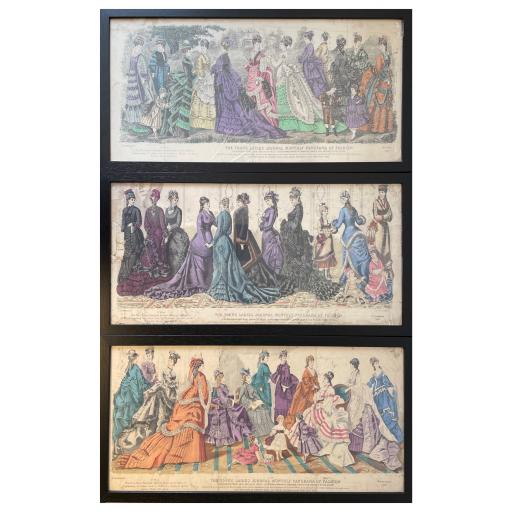What Was Life Like in the Victorian Era?
Table of Contents
-
Introduction
-
Queen Victoria and Her Reign
-
Social Changes in the Victorian Era
-
Technological Advancements and Invention
-
Public Health and Disease
-
Hardships Faced by Children
-
Victorian Schools
-
Discoveries, Inventions, and Innovations
-
Conclusion
-
FAQs
Introduction
The Victorian Era, spanning from 1837 to 1901, stands as a captivating chapter in history that witnessed a remarkable blend of progress and challenges. This blog aims to delve into the rich tapestry of life during this transformative period, shedding light on its diverse aspects and providing a deeper understanding of the Victorian Era's complexities.
Throughout the Victorian Era, the world underwent significant changes, both socially and technologically. It was an era characterized by an intricate interplay of traditions and innovation, shaping the lives of individuals and communities. From the reign of Queen Victoria to the emergence of industrialisation and scientific advancements, the Victorian Era holds a profound influence on modern society.
By exploring the multifaceted nature of this era, we aim to provide primary school teachers with a comprehensive resource to educate their students about the Victorian Era. The blog will cover a wide range of topics, including Queen Victoria's reign, the societal changes that unfolded, the remarkable inventions and technological breakthroughs, the disparities that existed within society, and the everyday realities experienced by people from various walks of life.
We will delve into the hardships faced by children during this time, the state of public health and its impact on everyday life, and the unique experiences of Victorian schools. Furthermore, we will shed light on the discoveries, inventions, and innovations that shaped the Victorian Era and laid the foundation for the world we inhabit today.
Through a careful exploration of these themes, this blog aims to present a holistic view of life during the Victorian Era, providing primary school teachers with the knowledge and resources to engage their students effectively. By capturing the essence of this remarkable period in history, we hope to foster a deeper appreciation for the complexities and intricacies of the Victorian Era and its enduring impact on our lives.
2. Queen Victoria and Her Reign
Queen Victoria, born Alexandrina Victoria, became the Queen of the United Kingdom in 1837 at the young age of 18. Her reign, which lasted for an impressive 63 years, is known as the Victorian Era. Queen Victoria's reign was a period of significant historical importance, marked by stability, prosperity, and profound changes in various aspects of society.
One of Queen Victoria's most notable achievements was her role in maintaining stability throughout her reign. Her reign saw the United Kingdom undergo a series of political and social transformations, and she successfully navigated these changes with grace and wisdom. Her steadfast leadership and commitment to her duties as the monarch earned her immense respect and admiration from her subjects.
Under Queen Victoria's reign, the United Kingdom experienced a remarkable period of economic prosperity. The Industrial Revolution was in full swing, and the country witnessed substantial growth in industries such as manufacturing, mining, and textiles. This led to an increase in employment opportunities and a rise in the standard of living for many. The expansion of the British Empire during this time also contributed to the nation's economic strength.
Beyond the economic advancements, Queen Victoria's reign had a profound impact on the cultural landscape of the United Kingdom. The Victorian Era is renowned for its emphasis on morality, strict social codes, and the promotion of family values. Queen Victoria's personal commitment to these values influenced societal norms, shaping the behaviors and expectations of the people during her reign.
Queen Victoria was also a significant patron of the arts and sciences. She had a keen interest in literature, music, and architecture, and her support fostered a flourishing cultural scene. The Victorian era saw the rise of renowned authors such as Charles Dickens, Charlotte Brontë, and Oscar Wilde, whose works continue to captivate readers to this day. The architectural style of the era, characterised by ornate designs and grandeur, can still be admired in many buildings across the United Kingdom.
Additionally, Queen Victoria's reign witnessed significant advancements in science and technology. The era saw remarkable progress in fields such as medicine, engineering, and transportation. Notable inventions during this time included the development of the telegraph, the steam engine, and advancements in railway systems. These innovations revolutionised communication, travel, and industry, laying the foundation for the modern world.
Her reign came to an end in 1901 with her passing, marking the end of an era that had a lasting impact on the United Kingdom and beyond. Her legacy as the longest-reigning monarch in British history and her contributions to stability, prosperity, and cultural advancements make her a pivotal figure in history.
Queen Victoria's reign embodies an era of transformation, progress, and cultural significance. Her leadership and the changes that occurred during her time as queen continue to shape our understanding of the Victorian Era and its lasting influence on society, art, and technology.

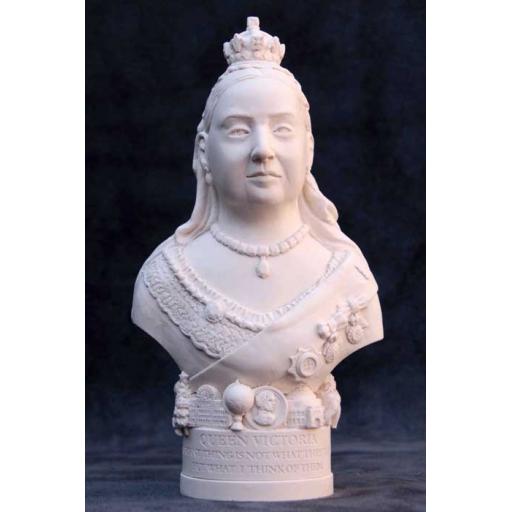
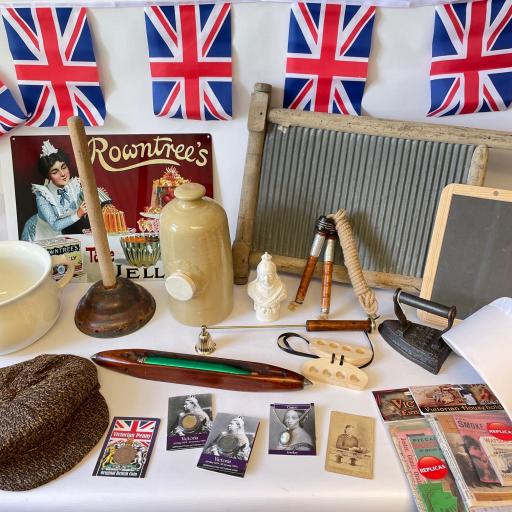
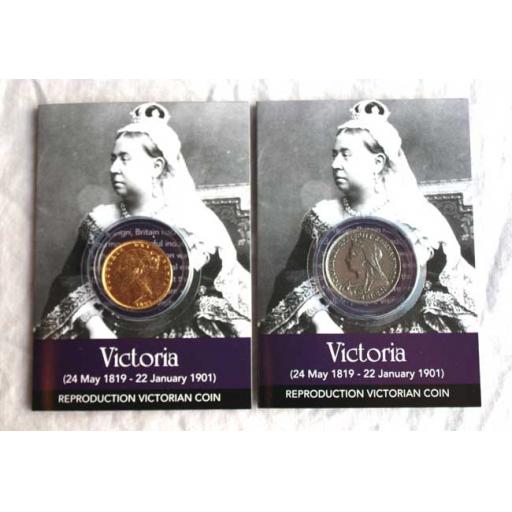
3. Social Changes in the Victorian Era
The Victorian Era stands as a transformative period in which society experienced substantial social changes, triggered by the profound shifts brought about by the Industrial Revolution. These changes, marked by the transition from agrarian to industrial societies, reshaped the fabric of Victorian life and gave rise to a dynamic landscape of social structures and interactions.
One of the most significant social transformations of the Victorian Era was the rapid urbanisation and the growth of cities. The Industrial Revolution spurred the migration of people from rural areas to urban centers, seeking employment opportunities in factories and industries. This mass influx of individuals into cities led to the expansion of urban areas and the establishment of vibrant metropolitan landscapes. As a result, Victorian cities became bustling hubs of activity, with the rapid development of infrastructure, housing, and transportation networks.
Alongside the urbanisation process, the Victorian Era witnessed the emergence and consolidation of the middle class. The expansion of industrialisation created new avenues for economic growth, and individuals from modest backgrounds found opportunities to rise in social status. The middle class, comprised of entrepreneurs, professionals, and skilled workers, enjoyed newfound prosperity and social mobility. This growing middle class became a driving force behind societal progress and contributed significantly to the changing cultural landscape of the era.
The improvements in living standards were particularly pronounced for sections of society that benefitted from the industrial advancements. The availability of new technologies, increased access to goods and services, and the rise of consumer culture elevated the quality of life for many. With the proliferation of mass-produced goods, such as clothing and household items, individuals from various social classes could acquire previously unattainable commodities, contributing to a sense of upward mobility and improved living conditions.
However, it is essential to recognise that not all segments of society experienced the same degree of improvement. While some prospered during this period of change, others faced significant challenges and hardships. The disparities between the rich and the poor widened, resulting in stark social inequalities. The working class, comprising laborers and factory workers, often endured grueling working conditions, long hours, and low wages. Many families struggled to make ends meet, facing poverty, overcrowded living conditions, and limited access to basic amenities.
Moreover, the social changes of the Victorian Era also had implications for gender roles and expectations. The ideals of domesticity and separate spheres for men and women gained prominence, with women primarily relegated to the private sphere of the home and men occupying positions of power and influence in the public domain. While these societal norms imposed limitations on women's opportunities and aspirations, there were also notable instances of pioneering women who challenged conventions and contributed to social progress.
4. Technological Advancements and Inventions
The Victorian Era stands as a remarkable period of technological advancements and groundbreaking inventions that revolutionised various aspects of society. These innovations, driven by the spirit of progress and curiosity, transformed transportation, communication, and manufacturing processes, leaving an indelible mark on history.
One of the most influential technological advancements of the Victorian Era was the development of the steam engine. Pioneered by inventors such as James Watt and George Stephenson, the steam engine brought about a paradigm shift in transportation and industry. Steam-powered locomotives propelled the establishment of extensive railway networks, connecting cities and regions like never before. This breakthrough in transportation facilitated the movement of goods, people, and ideas, accelerating the pace of industrialisation and facilitating economic growth.
In addition to the steam engine, the Victorian Era witnessed the advent of the telegraph, a groundbreaking invention that transformed long-distance communication. Developed by Samuel Morse and Sir William Fothergill Cooke, the telegraph enabled the transmission of messages across vast distances through electrical signals. This innovation revolutionised the speed and efficiency of communication, bridging gaps and connecting individuals and communities like never before. It played a pivotal role in facilitating trade, coordinating transportation, and disseminating news, laying the foundation for the global communication networks we rely on today.
The Victorian Era was also a time of significant advancements in manufacturing processes. Industrial technologies, such as the power loom and the spinning jenny, transformed the textile industry, leading to increased production capacities and the availability of affordable fabrics. This industrialisation of textile manufacturing not only fueled economic growth but also brought about shifts in societal norms and fashion trends. Mass production techniques allowed textiles to be accessible to a wider range of social classes, transforming the way people dressed and enhancing their quality of life.
Furthermore, the era witnessed notable inventions and discoveries in various fields. The development of photography by pioneers like Louis Daguerre and William Henry Fox Talbot opened up new avenues for capturing images and preserving moments in time. This innovation had profound implications for art, journalism, and documentation, providing a visual record of the Victorian Era and its societal changes.
Advancements in medicine and healthcare also marked the Victorian Era. Innovations such as the use of anesthetics during surgery, pioneered by figures like Sir James Young Simpson, revolutionised medical practices and patient care. The understanding of germs and the importance of hygiene, as championed by figures like Florence Nightingale, led to improvements in public health and reduced the spread of diseases.
The era also saw a remarkable progress in engineering and construction. Architectural marvels like the Crystal Palace, designed by Joseph Paxton, showcased the possibilities of iron and glass in construction, exemplifying the spirit of innovation and experimentation that defined the Victorian Era. These advancements in engineering and architecture laid the foundation for the development of modern cities and influenced architectural styles around the world.

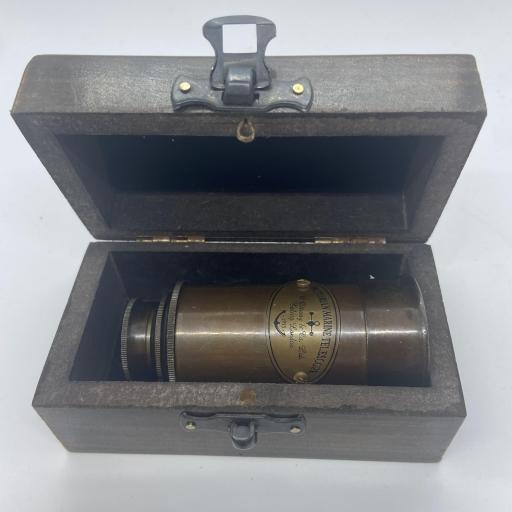
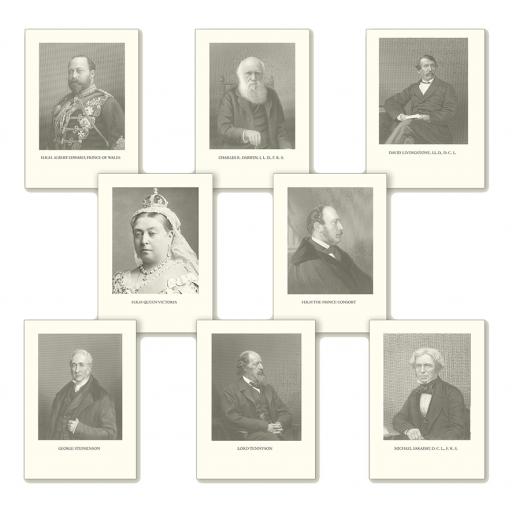
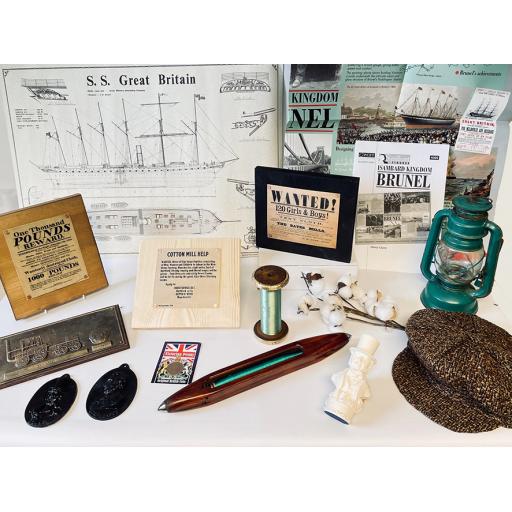
5. Public Health and Disease in the Victorian Era
Public health and the prevalence of disease were significant issues that shaped the daily lives of individuals during the Victorian Era. The rapid urbanisation and population growth that occurred during this period brought about numerous challenges, particularly in terms of public health and sanitation.
The crowded living conditions in urban areas became breeding grounds for infectious diseases. Overcrowding, coupled with inadequate sanitation facilities and limited access to clean water, created an environment conducive to the spread of diseases such as cholera, typhoid, and tuberculosis. Contaminated water sources and poor waste management practices further exacerbated the health risks faced by the population.
Cholera, in particular, emerged as a devastating epidemic during the early Victorian Era. The disease was transmitted through contaminated water and caused severe dehydration and gastrointestinal distress. Outbreaks of cholera resulted in high mortality rates, especially in densely populated areas with inadequate sanitation infrastructure.
Tuberculosis, commonly known as consumption, was another prevalent disease during the Victorian Era. It was a highly infectious respiratory illness that spread easily in cramped living conditions. The lack of effective treatments and limited understanding of the disease contributed to its widespread impact on communities.
The dire state of public health during the early Victorian Era prompted significant efforts to improve sanitation practices and address the root causes of disease transmission. The implementation of public health measures, such as the construction of sewage systems and the establishment of clean water supplies, played a crucial role in combating the spread of infectious diseases. The work of notable figures like Edwin Chadwick, who advocated for sanitary reforms, paved the way for improvements in public health infrastructure.
Towards the latter part of the Victorian Era, advancements in medical science and understanding of disease contributed to further progress in public health. The discovery of the germ theory of disease by scientists like Louis Pasteur and Robert Koch revolutionised the understanding of disease transmission. This breakthrough led to the implementation of more effective hygiene practices, including handwashing and sterilisation techniques, which significantly reduced the incidence of infectious diseases.
The establishment of public hospitals and the professionalisation of nursing played crucial roles in improving healthcare services and addressing public health concerns. Florence Nightingale, a pioneering nurse during the Victorian Era, emphasised the importance of proper sanitation practices in healthcare settings, leading to significant advancements in hospital hygiene.
While substantial progress was made in public health and sanitation during the Victorian Era, it is important to note that these improvements were not evenly distributed across society. The working class, in particular, continued to face significant challenges in terms of access to clean living conditions and healthcare services. Overcrowded and unsanitary living conditions persisted in many industrial areas, contributing to ongoing health risks and disparities in health outcomes.
6. Hardships Faced by Children in the Victorian Era
Children in the Victorian Era experienced significant hardships, often deprived of their childhood and subjected to difficult and dangerous conditions. The societal norms and economic realities of the time forced many children into labor, limiting their access to education and exposing them to arduous and hazardous work environments.
Child labor was prevalent during the Victorian Era, especially in industrialised areas. Children as young as five or six years old were employed in factories, mines, and as chimney sweeps. These occupations were physically demanding and posed severe risks to the health and well-being of young workers. Factory work often involved long hours of repetitive tasks, such as textile manufacturing, where children were exposed to harmful chemicals and faced the constant threat of injuries from machinery.
In the mining industry, children were employed to crawl through narrow tunnels, extracting coal under dangerous and inhospitable conditions. The cramped and poorly ventilated mines exposed them to the risk of accidents, respiratory diseases, and long-term health issues. Similarly, young chimney sweeps faced perilous working conditions, climbing narrow and soot-filled chimneys to clean them, risking suffocation and physical injuries.
The plight of child laborers extended beyond the physical hardships they endured. Their education was often neglected or entirely absent, as they were forced to prioritise work over schooling. Many children from lower socio-economic backgrounds lacked access to formal education altogether. The absence of educational opportunities limited their intellectual and social development, trapping them in a cycle of poverty and limited prospects for upward mobility.
Recognising the detrimental impact of child labor on the well-being of children and society as a whole, reform movements emerged during the Victorian Era. Child labor reformers, such as Lord Shaftesbury and the Factory Act campaigners, advocated for legislative changes to protect children from exploitation and improve their working conditions. The Factory Acts, passed between 1833 and 1878, introduced regulations to limit the hours of work for children and improve safety standards in factories. These reforms marked significant milestones in improving the lives of child laborers and were instrumental in laying the groundwork for subsequent labor and child welfare legislation.
However, it is important to note that despite these reforms, the eradication of child labor and the full realisation of children's rights took time. The enforcement of legislation and the shift in societal attitudes towards child labor were gradual processes. Many children continued to face exploitation and harsh working conditions well into the late Victorian Era.
The hardships faced by children in the Victorian Era underscore the importance of acknowledging and protecting the rights and well-being of young individuals. The efforts of reformers and the introduction of legislative measures played a crucial role in improving the conditions for child laborers. Today, the lessons learned from the struggles of children during this era continue to shape our understanding of child rights, labor laws, and the significance of ensuring a nurturing and supportive environment for all children.




7. Victorian Schools: Education and Reform
Education in the Victorian Era underwent transformative changes that aimed to address the disparities in access to schooling. Initially, education was primarily reserved for the privileged few, leaving the majority of children without formal schooling opportunities. However, as the era progressed, efforts were made to establish compulsory education and improve the quality of education provided to all children.
In the early Victorian Era, education was primarily accessible to the upper and middle classes. Wealthy families employed private tutors or sent their children to prestigious boarding schools, where they received a classical education emphasising subjects such as Latin, Greek, mathematics, and literature. These institutions focused on shaping the character and intellect of students in preparation for their future roles as leaders and professionals.
Conversely, children from working-class families had limited access to education. Many were expected to contribute to their family's income from a young age, working in factories or as domestic servants. Education for these children was often an afterthought, if considered at all. Ragged schools and charity schools emerged as grassroots initiatives to provide basic education to impoverished children, relying on charitable donations and volunteer efforts.
The mid to late Victorian Era witnessed significant educational reforms aimed at expanding access to education and improving its quality. The Elementary Education Act of 1870 marked a turning point by introducing compulsory education for children aged 5 to 12. It mandated the establishment of school boards responsible for building and maintaining schools, funded by local taxes. This act laid the foundation for the development of state-funded elementary schools, known as board schools, that were accessible to children from all social backgrounds.
However, the quality of education varied greatly depending on social class and geographical location. Schools in wealthier areas often provided better resources, facilities, and qualified teachers, while those in impoverished districts struggled to meet the educational needs of their students. Despite these challenges, the introduction of compulsory education and the establishment of public schools represented significant progress in expanding educational opportunities for the general population.
Curricula in Victorian schools were heavily focused on literacy, numeracy, and moral instruction. Reading, writing, arithmetic, and religious studies formed the core subjects, with an emphasis on discipline and character development. The teaching methods employed were often strict and regimented, reflecting the prevailing Victorian values of order, obedience, and conformity.
Girls' education during the Victorian Era was marked by both progress and limitations. While the emphasis on education for girls increased, particularly among the middle and upper classes, their curriculum was often tailored towards domestic skills and preparing them for future roles as wives and mothers. Subjects such as needlework, music, and drawing were considered essential components of a girl's education, reinforcing traditional gender roles.
The reforms and advancements in education during the Victorian Era laid the groundwork for the modern education system. The recognition of the importance of universal access to education and the establishment of state-funded schools paved the way for subsequent educational reforms in the years to come.
8. Discoveries, Inventions, and Innovations in the Victorian Era
The Victorian Era stands as a period of remarkable discoveries, groundbreaking inventions, and revolutionary innovations that shaped the course of human progress. Across various fields, from science to technology, Victorian inventors and scientists made significant contributions, expanding human knowledge and transforming everyday life.
One of the most significant scientific advancements of the era was Charles Darwin's theory of evolution. Darwin's groundbreaking work, "On the Origin of Species," published in 1859, presented a comprehensive explanation of the process of natural selection and challenged prevailing beliefs about the origins and development of life on Earth. Darwin's theory had profound implications for biology, anthropology, and our understanding of the natural world, sparking intense debates and revolutionising scientific thinking.
In addition to Darwin's theory, the Victorian Era witnessed numerous discoveries in the realm of science. Scientists such as Michael Faraday, James Clerk Maxwell, and Lord Kelvin made groundbreaking contributions to physics and electromagnetism, unraveling the fundamental principles that underpin modern technology. Faraday's experiments in electromagnetism laid the foundation for the development of electrical power, while Maxwell's equations provided a mathematical framework to understand the behavior of electromagnetic waves. Lord Kelvin's work in thermodynamics and the study of heat energy propelled advancements in engineering and the understanding of energy transfer.
The era was also marked by remarkable technological inventions that transformed communication and daily life. One of the most transformative inventions was the telephone, patented by Alexander Graham Bell in 1876. The telephone revolutionised communication, allowing individuals to connect over long distances in real-time. Similarly, Thomas Edison's invention of the phonograph, a device that could record and play back sound, laid the groundwork for the development of the modern music and entertainment industry.
Another iconic invention of the Victorian Era was the electric light bulb, pioneered by inventors like Sir Joseph Swan and Thomas Edison. The widespread adoption of electric lighting revolutionized the way people lived, extending productive hours into the evening and improving safety and comfort in homes and workplaces.
The era also witnessed significant progress in transportation and engineering. The introduction of steam-powered locomotives and the expansion of railway networks enabled faster and more efficient transportation, connecting people and goods across vast distances. The construction of iconic engineering marvels like the London Underground and the Brooklyn Bridge demonstrated Victorian engineers' prowess and their ability to overcome complex challenges.
Advancements in medicine and healthcare had a profound impact on public health and well-being. The development of antiseptic techniques by figures like Joseph Lister reduced infection rates during surgeries and improved patient outcomes. Florence Nightingale's work in nursing and healthcare reform significantly elevated the standards of healthcare and hospital management.
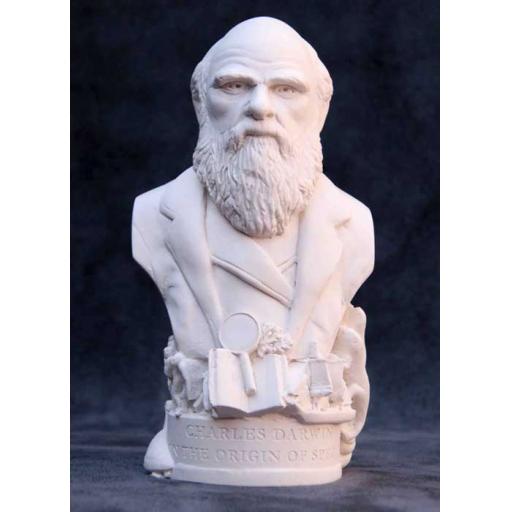



Conclusion:
The Victorian Era stands as a pivotal period in history, leaving an indelible mark on society and shaping the world as we know it today. From Queen Victoria's reign to the profound social changes, technological advancements, and societal disparities, this era encompassed a multitude of experiences and developments.
Queen Victoria's reign, spanning an impressive 63 years, brought stability, prosperity, and cultural advancements to the United Kingdom. Her reign coincided with significant shifts in societal norms and values, as well as industrial and scientific progress. The influence of Queen Victoria and the Victorian ideals of morality, family values, and propriety permeated all aspects of life during this era.
The Victorian Era was characterised by profound social changes, fueled by the Industrial Revolution. The transition from agrarian to industrial societies led to urbanisation and the rapid growth of cities. The rise of the middle class brought about improvements in living standards for some segments of society. However, it is important to acknowledge that not everyone benefited equally from these changes. Disparities between the rich and the poor widened, and working conditions for the lower classes were often harsh and exploitative. Child labor was pervasive, and workers endured long hours, low wages, and unsafe working conditions.
Technological advancements and inventions during the Victorian Era were revolutionary, shaping the course of human progress. Innovations such as the steam engine, telegraph, and railway system revolutionised transportation, communication, and manufacturing processes. These advancements laid the foundation for the modern world, facilitating global connectivity, mass production, and the exchange of ideas on an unprecedented scale.
Despite the progress and advancements, it is crucial to recognise the hardships faced by individuals, particularly the hardships endured by children. Many children were thrust into labor at an early age, working in factories, mines, or as chimney sweeps. Their lives were marked by dangerous conditions, grueling hours, and limited access to education. However, efforts were made to address these issues through gradual child labor reforms and the establishment of basic education opportunities.
Public health and sanitation were major concerns during the Victorian Era, as overcrowded living conditions in urban areas contributed to the spread of diseases. The latter part of the era witnessed significant progress in improving public health through advancements in medical science and sanitation practices.
In conclusion, the Victorian Era was a complex period defined by the reign of Queen Victoria, societal changes, technological advancements, disparities, and the resilience of individuals. By delving into the multifaceted aspects of this era, we gain a deeper understanding of the triumphs and struggles of the past, shaping our perspective on the present and providing valuable lessons for the future. The legacy of the Victorian Era serves as a testament to the resilience, innovation, and progress achieved during a time of profound transformation and change.
FAQs
1. What role did Queen Victoria play in the Victorian Era? Queen Victoria played a pivotal role in the Victorian Era as the reigning monarch of the United Kingdom for over six decades. Her reign brought stability and prosperity, and she became a symbol of the era's values and ideals.
2. What were some popular leisure activities during the Victorian Era? Popular leisure activities varied based on social class. The wealthy engaged in lavish social events, attended balls, and participated in outdoor sports like hunting and horse riding. The working class enjoyed simpler forms of entertainment such as music halls, visiting parks, and participating in community gatherings.
3. How did the Industrial Revolution impact society during the Victorian Era? The Industrial Revolution transformed society by shifting from agrarian to industrial economies. It led to urbanization, the growth of factories, and improvements in transportation and communication. While it brought economic progress, it also resulted in social disparities and challenging working conditions for many.
4. What were the living conditions like in Victorian cities? Living conditions in Victorian cities were often overcrowded and unsanitary. Lack of proper sanitation and limited access to clean water contributed to the spread of diseases. The poor lived in cramped tenements, while the wealthy resided in spacious homes.
5. How did the Victorian Era contribute to advancements in science and technology? The Victorian Era was a period of remarkable scientific and technological progress. Discoveries in various fields, such as biology, chemistry, and physics, expanded knowledge and laid the foundation for future advancements. Inventions like the steam engine and telegraph revolutionized industries and communication systems.



